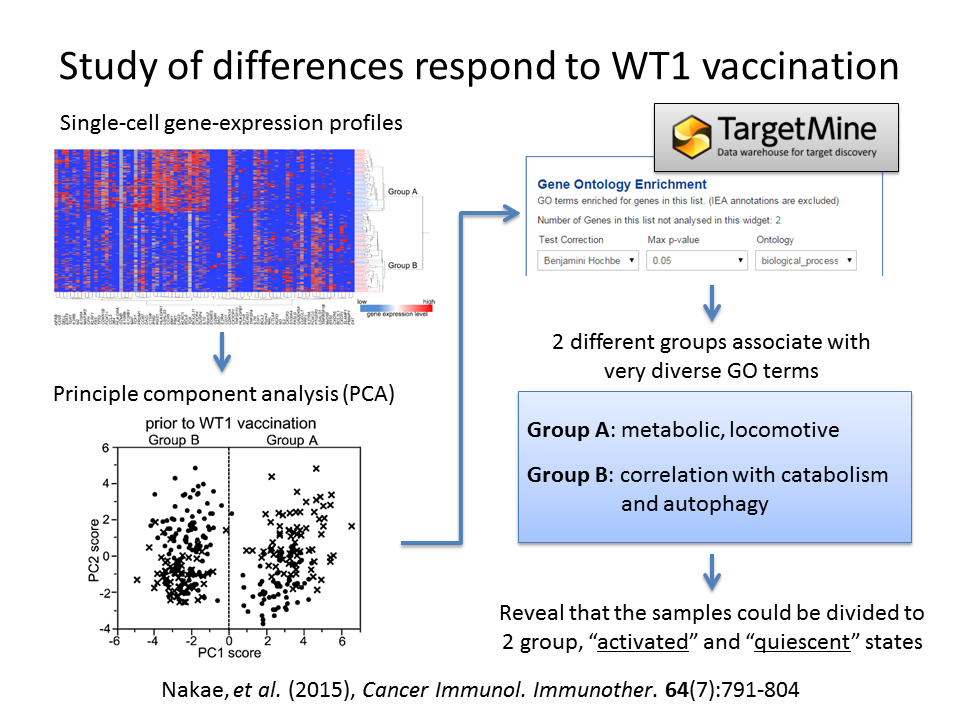 In a study of cancer immunotherapy, the authors were trying to examine the difference between responder and non-responder to the Wilms’ tumor gene 1 (WT1) vaccine for leukemia or solid cancers. Although clustering and principal component analyses (PCA) were not able to discriminate between responders and non-responders prior to WT1 vaccination. These analyses revealed that effector memory (EM) subset of WT1-specific cytotoxic T lymphocytes (CTLs) could be divided into two groups: the “activated” and “quiescent” states. Furthermore, in responders, EM subset of the CTLs shifted to the “quiescent” state, while in non-responders shifted to the activated” state after the WT1 vaccination. This discovery may provide some clues to clearly discriminate between responders and non-responders prior to WT1 vaccination using advanced gene expression profile analysis in the future.
In a study of cancer immunotherapy, the authors were trying to examine the difference between responder and non-responder to the Wilms’ tumor gene 1 (WT1) vaccine for leukemia or solid cancers. Although clustering and principal component analyses (PCA) were not able to discriminate between responders and non-responders prior to WT1 vaccination. These analyses revealed that effector memory (EM) subset of WT1-specific cytotoxic T lymphocytes (CTLs) could be divided into two groups: the “activated” and “quiescent” states. Furthermore, in responders, EM subset of the CTLs shifted to the “quiescent” state, while in non-responders shifted to the activated” state after the WT1 vaccination. This discovery may provide some clues to clearly discriminate between responders and non-responders prior to WT1 vaccination using advanced gene expression profile analysis in the future.
Reference:
- Nakae Y, et al. (2015) Two distinct effector memory cell populations of WT1 (Wilms’ tumor gene 1)-specific cytotoxic T lymphocytes in acute myeloid leukemia patients. Cancer Immunol Immunother. 64(7):791-804. [PubMed:25835542]


